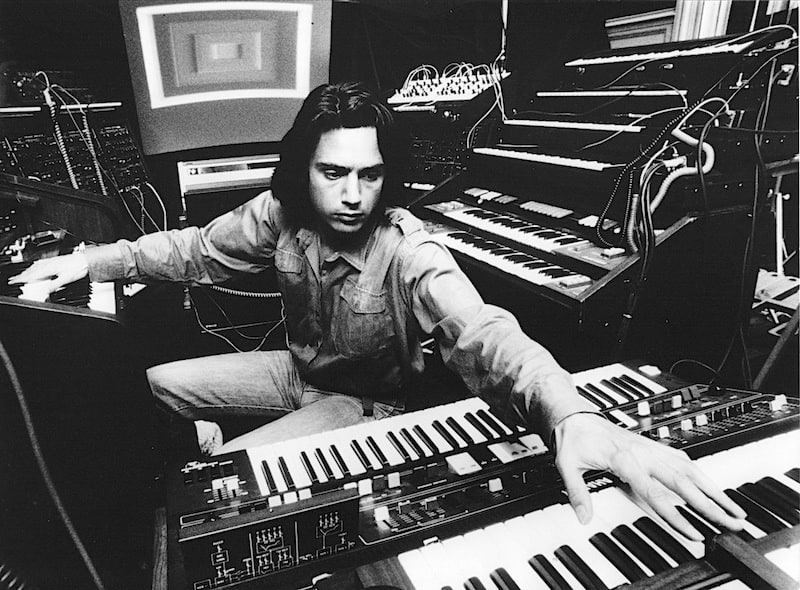Analog
How To Get a Synth Sound Like Jean-Michel Jarre

Mark Jenkins on creating those classic abstract synth sounds that can take the place of a drum fill
Some of the earliest pure synthesizer music albums were punctuated by abstract sounds that would do the work of a drum fill at the end of a bar of more conventional music. A prominent early example was Jean-Michel Jarre’s hit single “Oxygene 2,” which also features other novelties such as running an 18-note sequence under the 4/4 intro and more or less throughout the piece.
The abstract sounds we’re talking about were created on an EMS VCS3, a synth so obscure that many keyboardists who have played dozens of other instruments have never seen or got their hands on one. And because the VCS3 works in an unusual way, it gravitates towards producing unusual sounds that are by no means easy to reproduce on other more conventional instruments.
The VCS3 was developed by Dr. Peter Zinovieff, who has sadly died on 23rd June aged 88. Zinovieff was a classical composer of Russian origin interested in computer music. In those days that meant running a cabinet-sized device such as a PDP8, programmed from punched computer tape.
Zinovieff wanted to create something that would make life easier for avant-garde composers, but that more to the point would make some money for further investment in his computer music studio. In the mid 1960s he commissioned electronics designers to come up with the Voltage Controlled Studio, which ended up looking like a typical piece of post-war British industrial design, all shiny knobs and wooden paneling.
The VCS3 had nothing to do with computer music (and in fact Zinovieff made very little use of it himself) – it was an all-analog design having more in common with the much larger Moog Modular systems already available in the USA, but perhaps a tenth of the size and cost. It immediately became popular, in a modest way, with experimental pop composers and was used by Brian Eno with early Roxy Music, by Pink Floyd on “Dark Side of The Moon,” by Tangerine Dream and Klaus Schulze, and by Pete Towshend with The Who.
The VCS3 avoided the need for the Moog’s patch cabling by bringing all electronic inputs and outputs to a small pin matrix, inserting a pin joining together any two parameters. You then adjusted all the rotary knobs to complete a sound, and (though it was also possible to add a keyboard), could “play” parameters using a joystick.
This is what Jarre is doing on “Oxygene,” with many variations. Mostly he’ll make the filter whistle with a high resonance setting, modulate the resonating oscillator’s sine wave with one oscillator, and then (this is the tricky part) modulate it with another oscillator set to a different speed and waveshape.
The joystick, though only having Up/Down and Left/Right parameters, can send the resulting voltages to multiple sources, so it can raise or lower the pitch of the resonating oscillator as well as speeding up or slowing down one of the modulating oscillators:
Peeeeeowwww! WhhhhhizzzZZZZ! BLEEBLEEBleeBleebleebleeblebleeble…zzzzzzzkkkkKKKKKpreEEEEEEE!
That’s my best transliteration of the sounds produced, with the addition of a little tape echo or other delay. And something similar is produced by Tim Blake on the Gong album “Flying Teapot,” “You,” and others, by space rock band Hawkwind on “Space Ritual,” and so on.
Pink Floyd’s “Dark Side of the Moon” edges towards similar territory with the VCS3 and portable version the EMS Synthi A, creating the running sequence and sounds for “On The Run.” Blake tended to use a pair of Synthi As for his sounds, while Jarre racked up as many as six at a time.
It’s relatively easy to make these abstract sounds on Eurorack modular systems – some even have joystick modules available to help – but not so easy with small analog synths. On the Roland SH101, for example, you had the resonant filter, but only one LFO, so could only make very simple modulated sounds, like a police siren.
Other small synth designs did have two LFOs, but often with one running only to the filter and the other only to the oscillators. Rarely did you find a joystick or anything that would allow you to pull down the filter pitch while pushing up the modulation speed and depth, all with one hand…
On a Eurorack synth, try patching a couple of modulating LFOs (remember to jump around from square to saw to triangle outputs) to a resonating filter, or if you don’t have one, to a sine wave sound on an oscillator (square and other waveshapes just don’t have the same effect). If you don’t have a joystick, you need to patch two or three attenuator controllers, or maybe a foot controller to give you more options over how each sound develops and dies away.
There are also a few new ways to get at these EMS sounds these days. An iPad app called iVCS3 is excellent. A hardware instrument from Erica Synths in Latvia, the Syntrx, which does a very good job, adds MIDI and has a programmable pinbay rather than using actual pins. And there’s talk of a VCS3 version coming up from Behringer.
Using these striking and unearthly sounds to punctuate the end of a passage, or running them throughout a little more quietly, is always very effective and atmospheric. We have to thank the vision of Dr. Peter Zinovieff for bringing them down to this planet.





















